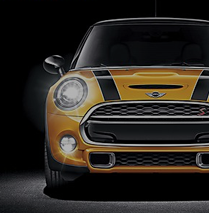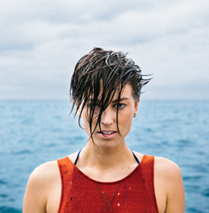How did you discover you wanted to be a designer and get started in the field? I wanted to be a musician but didn’t have the taste or talent. My public high school had a magnet program focused on art, so I got to hone my interest in the visual arts there. Teachers played a big part in helping me stay focused.
Teachers don’t get enough credit.
I got my first job designing graphics at the clothing company Billabong because my college professor recommended me for it.
What personal experiences or circumstances have most influenced your illustration work or style? I took a job at Billabong because I saw a T-shirt design I loved. It was one part skull and one part figure-ground. The artist is Phil Roberts, and he’s a master—a lifelong illustrator and painter. Coincidentally, he illustrated the Detroit Rock City film poster that hung above my brother’s bed. Folks like Phil, Jack Davis, Jim Phillips and House Industries are all influences. God-tier illustrators.
Your practice encompasses everything from graphic and apparel design to illustration, art direction, style guides and even retail strategy. How did you develop your multidisciplinary approach? When I was young, no one told me that graphics and illustration could be applied to anything. It seems so obvious now. Creators must remember we can design anything we want, even without a client. At the very least, mock-up the idea.
I’ve designed a bike, surfboards, blankets, headwear, apparel, skateboards, helmets, sunglasses and bags. I don’t design websites because I’m both bad at it and it’s boring.
What have been some of your most memorable client projects, and what have you learned from them? New Belgium, a beer maker, has been a perfect client. It let me design a 30th-anniversary collection containing a bike, apparel and a blanket. It has let me design posters and billboards too. It takes huge risks with different illustration styles. It lets me draw a lot of sharks. Great clients are out there.
Tell us about your apparel brand Chomp. What inspired you to create a fashion and accessories line, and what have you learned since its beginning? Apparel is a great canvas. When I started Chomp in 2015, there was an overwhelmingly self-serious tone to brands, and I wanted to start something totally silly and art-driven.
If you want to start an apparel business, just know you won’t make money with it for a long time. You might end up using your money as toilet paper.
Currently, there are 50 apparel styles on our site. If each has five sizes, you’re managing 250 different inventory levels. It’s a nightmare!
What are some of the challenges and opportunities inherent in designing apparel, and how does your approach change from other design work? I don’t complicate things. Whether it’s apparel or brand work, the question I ask when I’m done is: “Do I like looking at this?”
What excites you about design right now? It seems like companies really value individual contributors now. This wasn’t the case when I was young. The highest position for individual contributors at Google is called “distinguished designer.” Hilarious name. I bet Google makes you put on a top hat when you get it.
What other profit centers can illustrators and designers explore besides commissioned work? It was only six years ago that I started licensing my illustration work as opposed to buyout rights. Retaining ownership of your work is helpful sometimes. I’ve seen good illustration assets live multiple lives on different products. Jim Philips’s Screaming Hand illustration comes to mind—it’s been on everything.
Artists can make their own products as well. Digital products, like fonts, can be time-intensive but low-cost to maintain. It’s just a file. Typefaces pay out over time instead of all at once. I know some type designers who have got some financial security.
Physical products are a higher risk. My advice would be to sell something people would buy multiples of. A mentor of mine started the sock company Stance. It’s crazy how well it worked.
Do you have any advice for people just entering the profession? Don’t let your creativity be limited by your skill set. If you’re not great at it now, that’s OK. You have time. And don’t let your overhead get too big. ca












